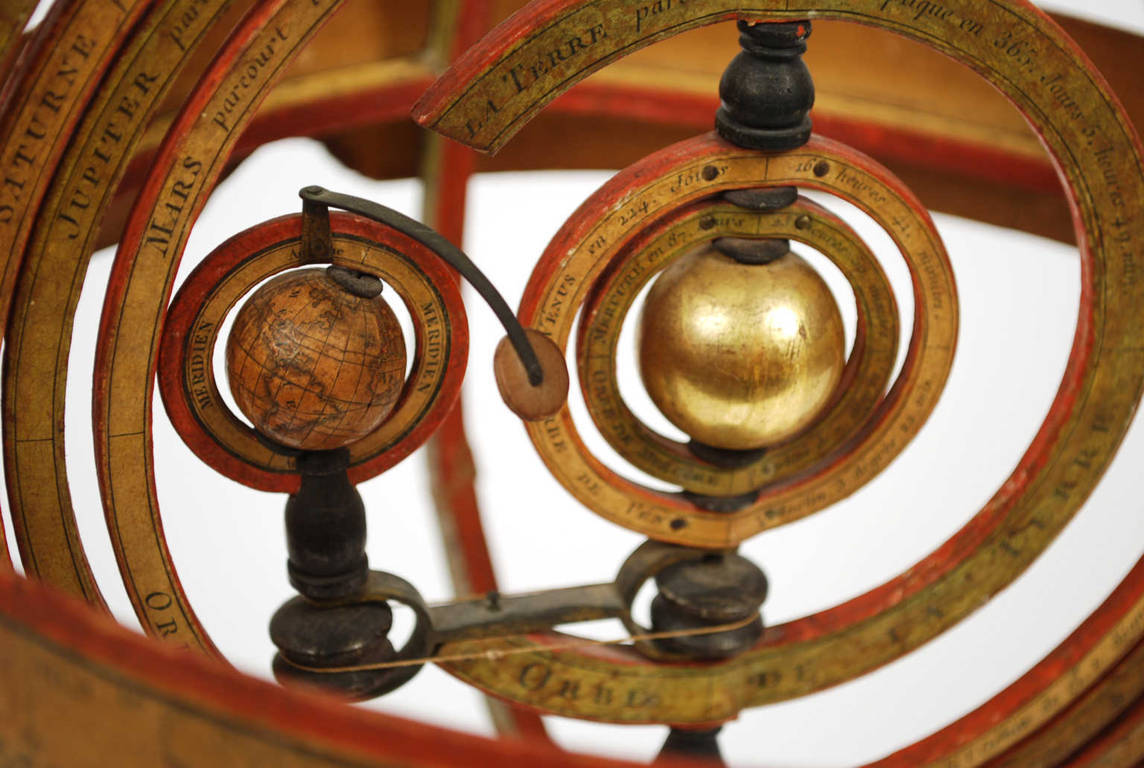antik.it/Antique-measuring-instruments/6264-Electrostatic-machine/
27102006161636734Code 6264 Electrostatic machineElectrostatic old machine, without glass disc. Signed CM, about 1880. Height cm 36 - inches 14.17, width cm 32 - inches 12.59.
An electrostatic generator, or electrostatic machine, is a mechanical device that produces high voltages with currents with very low intensity. The first generator of this type was built in 1663 by the German physicist Otto von Guericke, in order to demonstrate that electric charges of equal sign repel each other. The device consisted of a large glass sphere and inside it was housed a ball of sulfur mounted on a pole. Putting in rotation the outer sphere by means of a lever, the friction between the two spheres generated static electricity. The inner sphere could also be removed and used as a source of electrical charge for conducting experiments with electricity.
The type of machine shown here was created by James Wimshurst, British inventor and engineer, about 1880. Widespread and still used today for educational purposes, it is formed by two discs, which have narrow sectors of tin foil glued along the circumference, which are rotated in the opposite direction through a system of pulleys and drive belts. On both sides there are conductors, ending with wire brushes that rub against tin sectors. The charge is induced on two manifolds curved and it is then stored by a pair of bottles of Leiden connected to two sliding electrodes.
FAQ
Do you provide an authenticity certificate/expertise?
Of course! The legislative decree n. 42/2004 stipulates that who sells works of art or historical and archaeological items has the obligation to deliver to the purchaser the documents attesting to the authenticity of the object, or at least to submit the documents relating to the probable attribution and origin. Antik Arte & Scienza provides an expertise (as warranty) that contains a description, period and assignment or the author, if known, of the item.
How can I pay?
Secure payments by PayPal, credit card or bank transfer.
What are the shipping terms and the delivery schedule?
Shipping by DHL or UPS is free (but if we are shipping to a country non-EU remember that any taxes and customs duties are on your expense), and items will be sent just after receiving of payment.
Italy: delivering on the average in 24 h.
Europe: delivering on the average in 2/3 weekdays.
Other countries: delivering on the average in 5 weekdays; custom duties charged to the buyer.
Is shipping insured?
Of course! Free insurance by Lloyd's London that covers almost all destinations.
If I change my mind, can I return the item?
Of course! (see our general terms for more information).
e-Shop
Antique measuring instruments
Code 6264 Electrostatic machine
Antik Arte & Scienza sas di Daniela Giorgi - via S. Giovanni sul Muro 10 20121 Milan (MI) Italy - +39 0286461448 - info@antik.it - www.antik.it - Monday-Saturday: 10am-7pm














